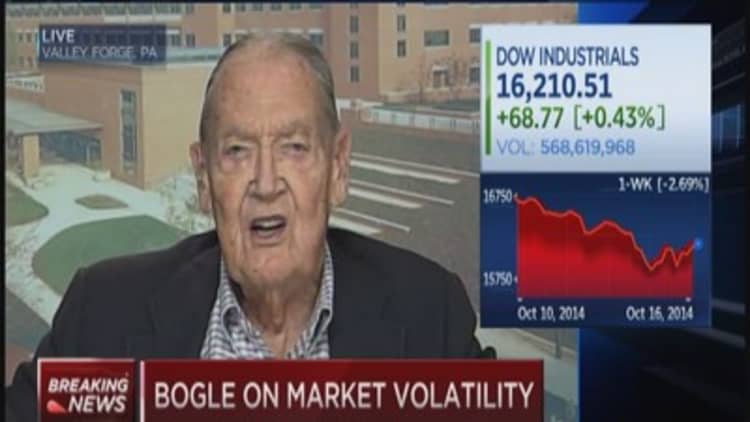Talk about your heavyweight fights: Bond giant Pimco is taking aim at investing legend Jack Bogle.
In a rejoinder distributed Friday, the Newport Beach, California-based firm disputed comments Vanguard founder Bogle made recently indicating that index investing was as preferable on fixed income as it is in equities.
Pimco managing director James Moore, in a paper titled "Sorry, Mr. Bogle, But I Respectfully Disagree. Strongly," seeks to dispel conventional thinking in the long-running active vs. passive debate.
Essentially, Moore's arguments comes down to five points:

The variety of investor objectives other than maximizing total return; the mechanics of bond index construction; the importance of the new issue market for bonds; the predominance of over-the-counter transactions; and the highly skewed returns on individual bonds versus stocks.
Bogle's argument in favor of indexing centers on costs and competence: A low-fee index fund will provide returns that nearly match performance minus a very low fee—along the lines of 5 basis points, or 0.05%—whereas that fee can quadruple under active manager scenarios.
Read More8 out of 10 active managers striking out this year
Active management has been a hugely losing proposition for 2014, with about 80 percent underperforming their benchmarks. Pimco's $201.6 billion flagship Total Return Fund has returned 3.03 percent year to date, lagging its own Barclays benchmark by more than a full percentage point, according to Morningstar.
However, Moore contends that looking at simple indexes doesn't provide a full picture.
For more on his argument, go here.
Vanguard officials did not immediately respond to a request for comment.
Read MoreRecent selloff 'nothing,' stay the course: Bogle
Correction: A previous version incorrectly stated the percentage equivalent of 5 basis points.






